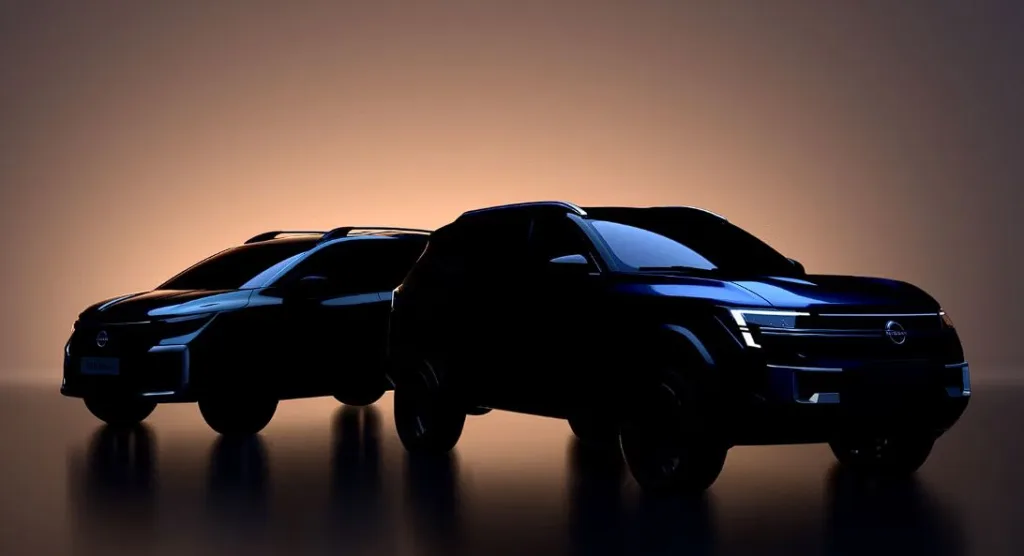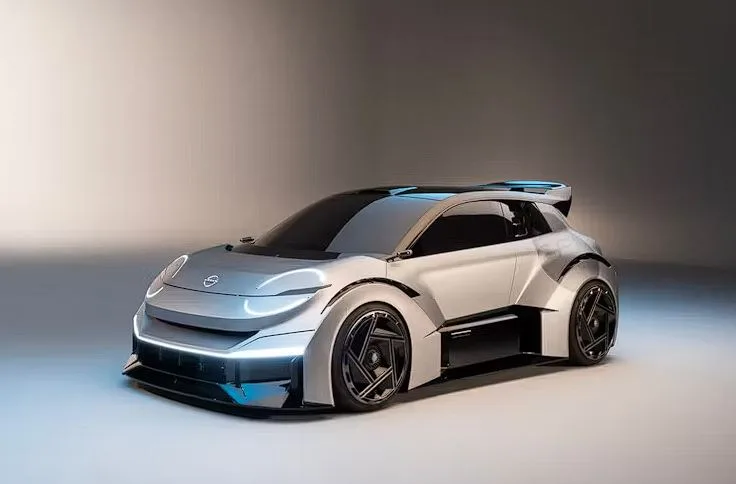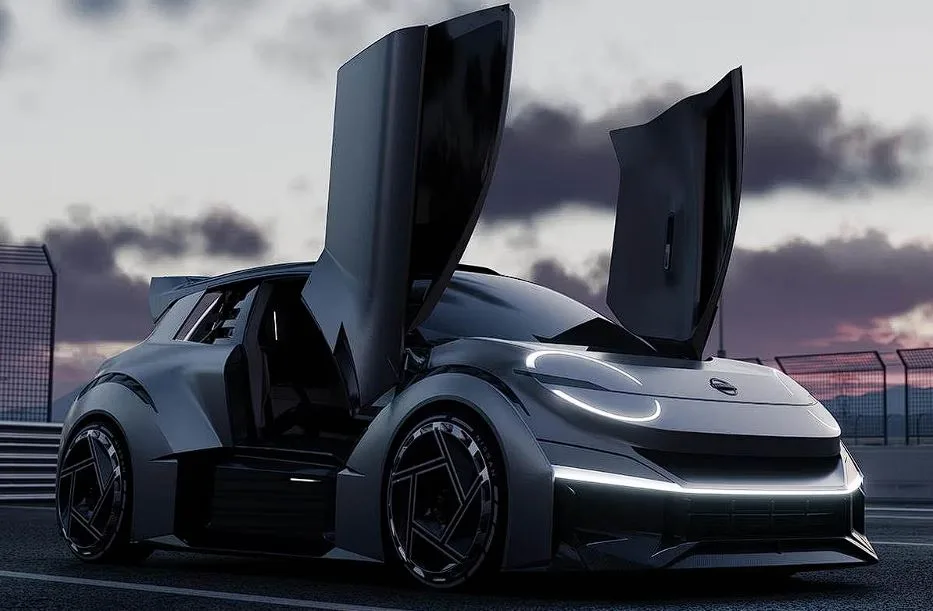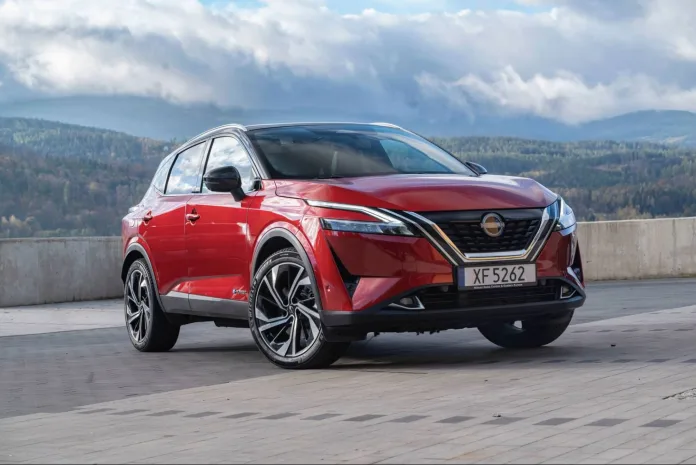As dawn broke over Nissan’s gleaming tech center in Atsugi, Japan, a palpable buzz of excitement filled the air. Journalists and industry insiders from around the globe gathered, eagerly anticipating the unveiling of not one, but two game-changing electric vehicles. Little did we know, we were about to witness the rebirth of two iconic nameplates – the Micra and the Leaf – reimagined for the electric age.
“Today, we’re not just launching new cars,” declared Makoto Uchida, Nissan’s CEO, his voice brimming with pride. “We’re igniting a revolution in sustainable mobility.”
As the covers were dramatically pulled back, a collective gasp rippled through the crowd. The new Micra EV, a far cry from its humble hatchback origins, stood before us as a sleek, futuristic city car. Besides it, the third-generation Leaf had morphed into a striking crossover, shedding its eco-car image for something altogether more desirable.
Let’s dive into the electrifying details of Nissan’s latest offerings:
Nissan to unveil Micra EV & Next-Gen Leaf: All You Need to Know
The Micra EV: Small Car, Big Ambitions
The all-new Micra EV is a testament to Nissan’s commitment to accessible electric mobility. Built on the CMF-BEV platform shared with alliance partner Renault, this compact powerhouse is set to redefine urban transportation.
Key Specifications:
- Battery options: 40kWh and 52kWh
- Maximum range: Over 400km (248 miles)
- Platform: CMF-BEV (shared with Renault 5)
- Manufacturing: Renault’s ElectriCity plant in Douai, France
As I circled the Micra EV, its design cues from the motorsport-themed 20-23 EV concept were unmistakable. The circular LED headlights, shaped like the Nissan logo, gave the car a distinctive, almost mischievous personality.
“We wanted something cute, with puppy-dog eyes,” chuckled Alfonso Albaisa, Nissan’s global design chief, as he guided me around the vehicle. “It’s a car that makes you smile, but don’t be fooled – it’s packed with serious tech.”
Indeed, beneath its charming exterior lies a wealth of advanced features. While Nissan is keeping mum on power figures, the larger 52 kWh battery promises a range that will ease even the most severe cases of range anxiety.

The Leaf Grows Up: From Hatchback to Crossover
If the Micra EV represents Nissan’s vision for urban mobility, the new Leaf is its answer to the burgeoning electric crossover market. This third-generation model has undergone a dramatic transformation, both inside and out.
Key Specifications:
- Platform: CMF-EV (shared with Nissan Ariya)
- Estimated range: Over 598km (371 miles)
- Drag coefficient: 0.25 Cd
- Manufacturing: Nissan’s Sunderland plant, UK
Gone is the compact hatchback silhouette, replaced by a more commanding presence with a higher stance and muscular proportions. As Francois Bailly, Nissan’s chief planning officer, explained, “The new Leaf is designed for the long haul. We’ve focused on aerodynamics and practicality to deliver a vehicle that can truly go the distance.”
The emphasis on aerodynamics is evident in every curve and contour. With a drag coefficient of just 0.25 Cd, the new Leaf slices through the air with minimal resistance, contributing to its impressive range.
A Tale of Two Platforms
Both the Micra EV and the new Leaf showcase Nissan’s strategic use of shared platforms within the Renault-Nissan-Mitsubishi Alliance. This approach not only streamlines development and production but also allows for rapid innovation across multiple models.
| Model | Platform | Shared With | Key Benefits |
|---|---|---|---|
| Micra EV | CMF-BEV | Renault 5 | Optimized for compact EVs, cost-effective |
| Leaf | CMF-EV | Nissan Ariya | Scalable, supports larger battery packs |
“These platforms are the foundation of our electric future,” Bailly emphasized. “They give us the flexibility to create diverse vehicles while leveraging shared technology and economies of scale.”

The Road Ahead: Nissan’s Electric Ambitions
While the Micra EV and new Leaf are stealing the spotlight today, they’re just the beginning of Nissan’s electric offensive. The company has ambitious plans for the coming years:
- 2025: Launch of the Micra EV and new Leaf in Europe
- 2026: Introduction of the electric Juke crossover
- Ongoing: Development of solid-state battery technology
For the Indian market, Nissan is taking a different approach. While the Micra EV and new Leaf won’t be making their way to the subcontinent just yet, the company has exciting plans for the region:
- 2025: Launch of a Renault Triber-based MPV
- 2026: Introduction of a Hyundai Creta rival SUV
“India is a crucial market for us,” explained Rakesh Srivastava, Managing Director of Nissan India. “We’re developing products specifically tailored to Indian consumers’ needs and preferences.”
The Electric Revolution: Beyond the Vehicles
Nissan’s commitment to electrification extends far beyond just producing EVs. The company is investing heavily in battery technology, charging infrastructure, and even exploring vehicle-to-grid systems that could revolutionize how we think about energy storage and distribution.
At the Sunderland plant in the UK, where the new Leaf will be manufactured, Nissan is creating a blueprint for sustainable manufacturing with its EV36Zero project. This initiative combines electric vehicle production, renewable energy generation, and battery manufacturing into a cohesive ecosystem.
“EV36Zero isn’t just about making cars,” Alan Johnson, Nissan’s Vice President of Manufacturing in the UK, told me. “It’s about creating a circular economy around electric vehicles, from production to end-of-life recycling.”
Also Read: Maruti Suzuki’s e-Vitara Launch: A New Chapter in Indian EV

Conclusion: Nissan Charges Ahead
As the presentation concluded and journalists swarmed the vehicles for a closer look, the magnitude of Nissan’s achievement began to sink in. With the new Micra EV and Leaf, the company has not only revitalized two iconic nameplates but also thrown down the gauntlet to its competitors in the electric vehicle space.
These vehicles represent more than just new models; they’re a statement of intent. Nissan, the company that brought us the original mass-market EV with the first-generation Leaf, is reclaiming its position at the forefront of the electric revolution.
As I watched Uchida-san chatting animatedly with a group of engineers, his excitement was contagious. “This is just the beginning,” he said, catching my eye. “The best is yet to come.”
For consumers, the message is clear: The electric future is here, and it’s more exciting, more practical, and more accessible than ever before. Nissan is charging ahead, and the rest of the automotive world had better take notice.
Frequently Asked Questions
When will the new Nissan Micra EV and Leaf be available for purchase?
The Micra EV and new Leaf are scheduled to launch in Europe in 2025. Specific release dates may vary by country.
What is the expected price range for these new electric vehicles?
Nissan has not yet announced pricing. However, given their focus on accessibility, expect the Micra EV to be competitively priced in the compact EV segment, while the new Leaf will likely be positioned as a premium electric crossover.
How does the range of the new Leaf compare to its competitors?
With an estimated range of over 598km (371 miles), the new Leaf is set to be highly competitive in the electric crossover segment, rivaling or surpassing many current market leaders.
Will these new EVs be available in the United States?
While Nissan has confirmed European launches, availability in the US market has not yet been announced. Given the popularity of crossovers in America, the new Leaf could potentially be introduced there.
What charging capabilities will these new EVs have?
Specific charging speeds haven’t been disclosed, but expect both models to support fast charging. The new Leaf, built on the CMF-EV platform, is likely to offer high-speed charging capabilities similar to the Nissan Ariya.


